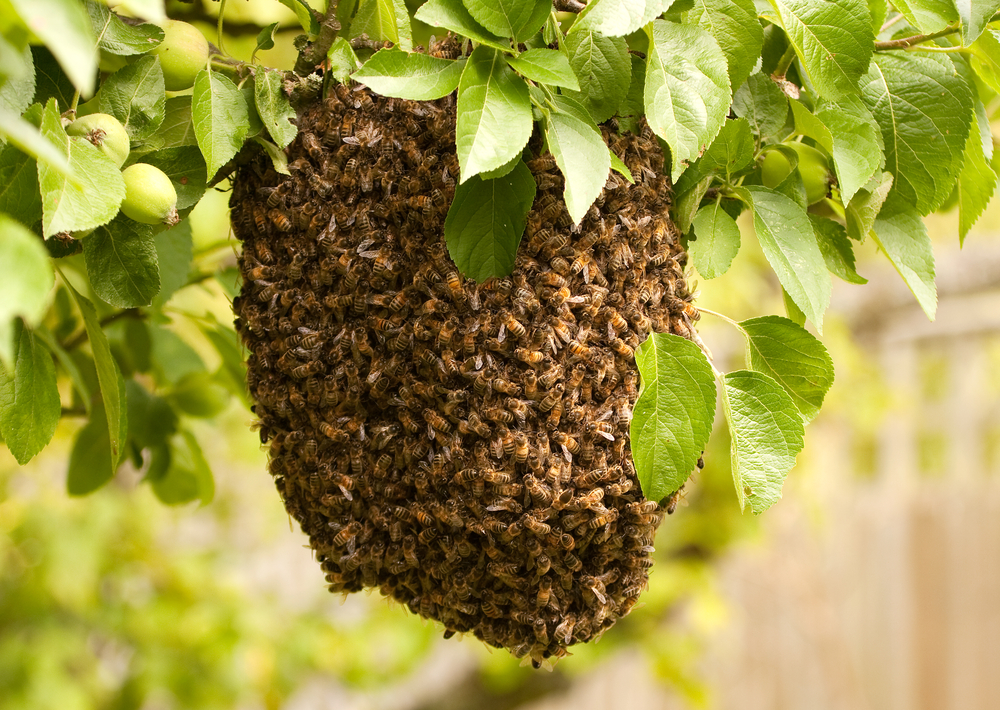Beekeepers Say: Don’t Worry About Honey Bee Swarms
May 03, 2019
With the new spring season comes rain, warmer weather, budding flowers, and, to the unfortunate chagrin of some, honey bees coming out in swarms. However, there’s no reason to be worried about these tiny insects, even when you find them flying around in one big swarm, according to a beekeeper from the English county of Yorkshire. This beekeeper, known as “Beekeeper Keith,” recently offered advice online to anyone who finds “a large cloud of bees congregating” now that the weather is warming up.
The post says, “It’s swarm season! If you see a large cloud of bees congregating somewhere or a large cluster of them hanging on a branch, sign, fence post, etc., DO NOT BE FRIGHTENED! These bees are homeless, wayward travelers and looking for a new place to set up a hive. They not only have no home to defend, but they are also full and fat on honey so that they have enough resources to start fresh wherever they end up. This is the calmest you will ever see a honey bee.”
One swarm of bees may include as many as 10,000—unsurprising given their small size and a swarm’s massive size. Swarming is, according to the York County Beekeeper’s Association, just “part of the reproductive cycle in honey bees.” A hive’s queen may reproduce individual honey bees through egg-laying and mating, but swarming is the way in which honey bees create a new colony. When a colony grows too large to sustain itself, the swarming process begins, and the colony produces a brand-new queen using a substance called royal jelly.
When this new queen emerges and later takes up her duties, she and roughly half the worker bees in the colony leave their hive in one large mass to find a new home. This mass may congregate on the sides of buildings, tree limbs, or fence posts near their original hive. These honey-making pollinators might swarm from anywhere between several minutes to a few hours or possibly even days just to find the best location.
This process is essential not just bees but for us as well, as scientists have been warning of declining honey bee populations for years, mainly because of pesticide use, habitat loss, climate change, colony collapse disorder, and many other factors. Just to prove the point further, a study published in 2017 found that the populations of over 700 bee species on the North American continent were in decline. We need these small creatures for both the economy and the environment, as bees are “responsible for one out of every three bites of food we eat,” as per the Department of Entomology for Michigan State University, pollinating many vegetables, fruits, seeds, nuts, and dozens of other crops.
Photo via Sally Wallis / Shutterstock


.jpg)



